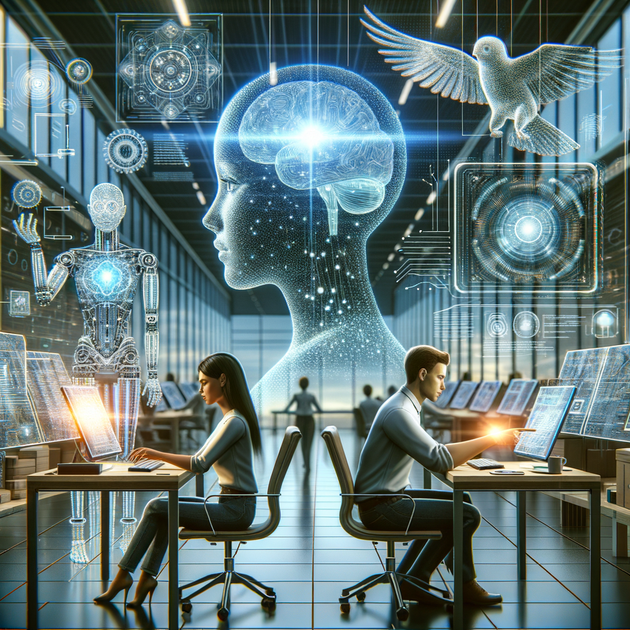The Pragmatic Approach to Understanding Artificial Intelligence
Imagine a world where computers are capable of performing tasks with human-like intelligence. It’s not just the stuff of science fiction anymore; it’s the reality shaped by Artificial Intelligence (AI). Yet, ask any expert, and you’ll likely receive a slightly different definition of AI. So, what really is AI? Let’s delve into a pragmatic understanding of this transformative technology.
AI: A Definition as Diverse as Its Applications
Defining AI might seem straightforward at first glance. Common definitions describe it as computer models that mimic human tasks and simulate intelligent behavior. However, the reality is far more nuanced. The diversity of opinions among experts often leads to varying definitions. Some argue that AI must involve deep learning models, while others consider even simple regression algorithms as AI. A recent study by a venture capital fund revealed that less than half of startups claiming to be AI-focused actually utilize AI technologies.
So, when can we label something as AI? My pragmatic approach identifies a set of common features that help define AI:
- The system simulates a human act or task.
- Learning is derived from examples rather than explicit instructions, emphasizing the need for data.
- Before deployment, one cannot predict the exact output for a given input, highlighting an inherent unpredictability.
Pragmatic Features of AI
If a system possesses these characteristics, then it’s fair to categorize it as AI. The specific algorithm behind the scenes is less important—the user’s experience and the developmental challenges remain consistent. The adage, “if it looks like a duck, quacks like a duck, and swims like a duck, then it probably is a duck,” applies fittingly here.
For example, consider AI in image recognition. The system analyses countless images to distinguish between a cat and a dog. Initially, predicting that a particular image input (X) will yield a specific recognition output (Y) is challenging. However, as the system learns, it becomes adept at identifying the correct labels with increasing accuracy.
The Hidden Complexities of AI
While this definition might simplify AI, it barely scratches the surface of its complexity. The challenges encountered in AI are substantial – from underlying human and technical issues to organizational hurdles. These challenges are amplified by AI’s need for vast amounts of data and the intricacy of developing models that can learn and adapt.

Real-World Examples
Consider AI’s application in healthcare. AI systems can predict patient diagnoses based on historical data, assisting doctors in making more informed decisions. Similarly, in finance, AI algorithms scrutinize stock market trends to forecast investment risks and opportunities.
An intriguing case is the use of conversational AI in customer service. These chatbots handle customer inquiries by processing natural language, demonstrating AI’s capability to simulate human-like conversation and learning from interaction patterns.
Bringing it All Together
The pragmatic approach to understanding AI doesn’t diminish its significance. Rather, it aims to clarify AI’s core features, making the technology more approachable and less mystifying. By focusing on what AI does – imitating human tasks, learning from data, and dealing with unpredictability – we can better appreciate its potential without getting lost in technical jargon.
When developing or utilizing AI, these considerations will guide you through the complex landscape of AI technologies. AI is not just a field for experts; it’s a realm where practical definitions and applications can drive immense innovation and progress.
